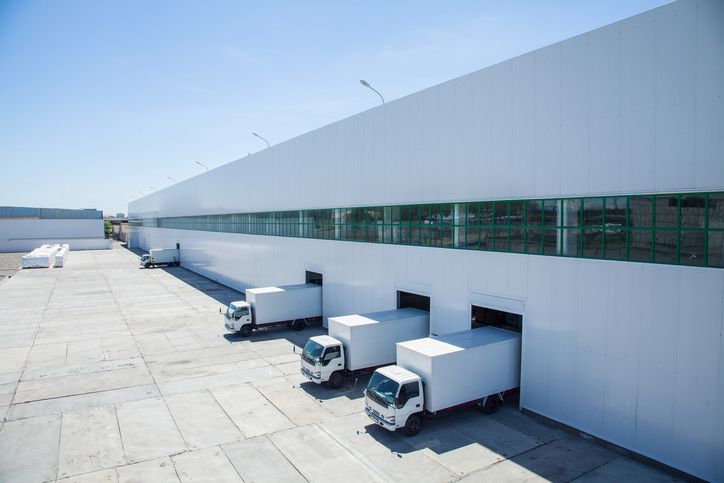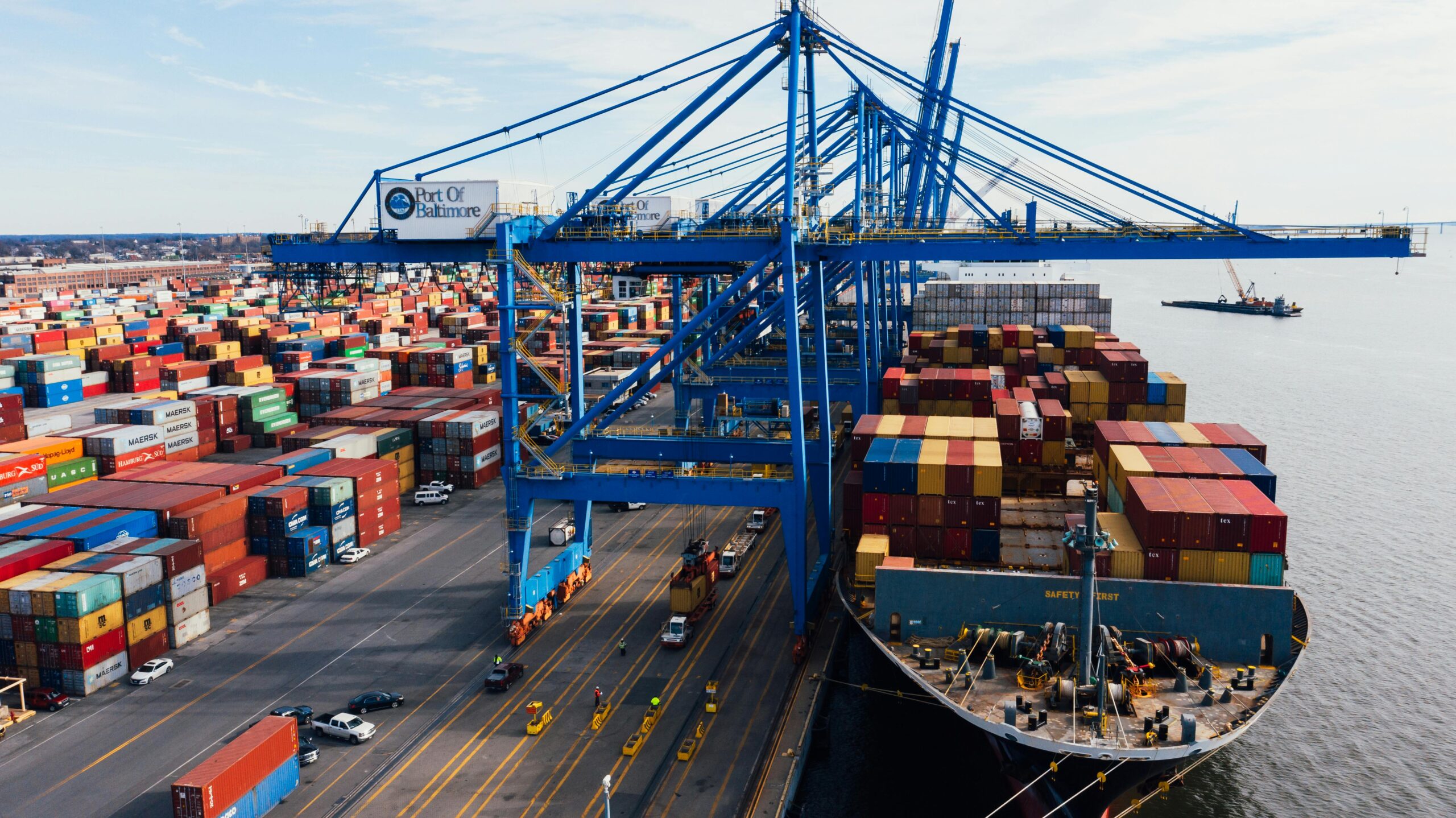
How to Automate Your Export Department: A Practical Guide 2025
Automation has revolutionized the logistics of the export department, especially in the processes of managing cargo containers. Currently, companies face the challenge of satisfying customers who expect immediate information on material availability and fast, seamless order processes without communication obstacles.
The functions of the export department have evolved significantly, encompassing everything from planning to the final delivery of the product. Managing an export department in a company requires understanding the different stages: planning, packaging, labeling, ground transportation, port storage, ship loading, maritime transport, unloading, and final delivery. Furthermore, the necessary documentation varies depending on the country of origin, destination, and type of merchandise.
In this practical guide for 2025, we will explore how to efficiently automate your company's export and trade department. We will analyze the key stages of the process, the required documentation, the types of inspections, automated workflows, and the competitive advantages you will gain by implementing these technological solutions.
Key stages of the export process to automate
The export process consists of various stages susceptible to automation, from the initial planning to the final delivery. For an efficient export department, it is essential to identify and optimize each phase through specific technologies that streamline operations and reduce human errors.
Planning and selection of the appropriate container
The first phase of every export process begins with strategic planning where the export department identifies the goods to be shipped and determines the final destination. This stage includes selecting the appropriate type of container based on the product's characteristics, volume, and specific transport requirements.
Automation in this phase allows for a structured analysis of the functions, services, and operations necessary for each shipment. Advanced planning systems facilitate the selection of appropriate machinery and technology, as well as the design of the optimal layout considering the different activities of the container depot.
Through logistic forecast tools based on historical demands, stock availability, and logistic windows, the department can perform simulations that predict bottlenecks and adjust the master plan for international shipments.
Packaging, labeling, and initial documentation
Once the container is selected, the goods must be packaged and labeled in accordance with international regulations. Automated industrial labeling systems meet the speed requirements needed in high-volume exports, providing flexibility regarding the physical location of the labels and application modality.
According to industry experts, automation in this phase guarantees compliance with global coding and traceability standards, facilitating the smooth flow of goods throughout the production line. Furthermore, the systems combine a printing engine with dispensing and application in a single machine, adapting to the physical configuration of the line.
Initial documentation, such as proforma invoices and packing lists, can be generated automatically through platforms that ensure their compatibility with the customs authorities of different countries.
Ground transportation and port storage
The ground transportation phase to the port requires precise coordination. TMS (Transport Management System) systems allow for the automation of route planning, managing multiple operators, and optimizing costs.
For port storage, there are innovative automated solutions like the ZPMC (Shanghai Zhenhua Port Machinery) system that uses two types of RMGs (Rail Mounted Gantry cranes) working in an integrated manner: some for movements in the storage area and others for external movements, including truck loading/unloading.
Loading, maritime transport, and unloading
During this stage, the goods are loaded onto the ship using automated cranes. IoT technology allows for real-time monitoring of the location and status of containers during maritime transport through sensors that collect data on temperature, humidity, and vibrations.
Traceability in international transport encompasses not only knowing the location in real time but also accessing key information about the status of the shipment and possible incidents. This visibility allows for the detection of any problems in the supply chain and the taking of preventive measures in case of delays or damage to the goods.

Final delivery and closure of the logistic process
The last stage comprises delivery to the importer and the administrative closure of the process. Automation in this phase allows for the efficient management of goods nationalization, tax settlement, and coordination of the final delivery.
Electronic data interchange (EDI) plays a fundamental role in this stage, allowing for the integration of the information systems of all companies participating in the logistics chain. This facilitates automating the generation, sending, reception, and recording of documents, reducing response times and improving the accuracy of management tasks.
A modern export department must implement systems that allow for real-time tracking of the closure process, automatically generating final documentation and providing performance analysis for future improvements.
Documentation generated in each phase of the process
Accurate and timely documentation constitutes the backbone of any successful export operation. In each phase of the logistics process, the export department must generate, manage, and process various documents that fulfill specific functions in the international supply chain.
Packing list and commercial invoice
Firstly, these documents are generated during the initial stages of the export process. The packing list meticulously details the contents of each container, including quantity, weight, and dimensions, facilitating labeling and cargo verification. On the other hand, the commercial invoice provides detailed information about the transaction, including product description, quantity, price, and sale conditions. Both documents are fundamental for the calculation of duties and taxes by customs officials.
Bill of lading and cargo manifest
Once the goods are ready for shipment, the bill of lading (B/L) is generated, a document that serves three functions: shipment receipt, contract of carriage, and title of ownership of the goods. This document contains crucial information about the type of cargo, quantity, origin, destination, and involved parties.
Furthermore, the cargo manifest becomes a comprehensive document that lists all the cargo on board a vessel for a specific voyage. This document is used by vessel operators as a complete guide, by customs officials to verify country entries, by shipping companies as an administrative document, and by shippers and consignees as proof of shipment.
Sanitary and certificates of origin
The certificate of origin functions as a "passport" for products, demonstrating where they were manufactured, which can significantly affect tariff rates when trading under preferential agreements. Meanwhile, sanitary certificates are essential for the export of food and products of animal and non-animal origin.
Sanitary certification for products of non-animal origin is being modernized through systems like SAEXCERT, developed by the Ministry of Health, which allows for the electronic issuance of certificates, replacing traditional handwritten processes.
Customs permits and export licenses
Finally, these documents vary depending on the product and destination. Licenses are especially necessary for high-tech equipment or military articles. Regarding customs permits, exporters must submit declaration forms that provide detailed information about the goods, including description, quantity, value, and tariff classification.
The automation of all this documentation through integrated systems allows the export department to reduce errors, save time, and improve traceability. Modern platforms facilitate the automatic extraction of data from bills of lading and other documents, sending this information directly to accounting systems, customs declaration workflows, and customer notification platforms.
In the current context, the efficient management of these documents constitutes a critical function of the export department in a company, especially when seeking to optimize resources and guarantee international regulatory compliance.
Types of inspections and audits in exports
Rigorous inspection is a fundamental pillar for any export department seeking to avoid costly delays and comply with international regulations. Verification processes vary by country and type of merchandise, but they share structural elements that can be automated to improve efficiency.
Documentary verification by customs
The first level of control focuses on the thorough review of documents. When the system determines the need for verification, the Automated Selection Mechanism (MSA) is activated, which can assign different channels based on the required level of review. The orange channel implies only a documentary verification, while other channels may require additional inspections.
The documentary review includes verifying tariff classification, commercial invoices, import/export permits, sanitary certificates, and other specific documents according to the product type. The automation of these processes allows for the validation of documentation in real time, reducing errors and speeding up customs clearances.
Physical inspection of goods
When the inspection traffic light marks red, the authorities proceed to carry out a detailed physical inspection. This process involves opening containers to verify that the products match what was declared, checking quantity, type, and compliance with local regulations.
During these inspections, aspects such as the correct identification of goods through labels, the physical condition of the products, and compliance with packaging and storage regulations are verified. Likewise, it is examined that the means of transport comply with safety standards, especially when dealing with dangerous goods.
Compliance with environmental and safety regulations
Environmental compliance has gained greater relevance with regulations like the CBAM (Carbon Border Adjustment Mechanism). This system requires quarterly declarations and digital certificates, increasing administrative complexity and requiring automation in ERP and customs systems.
Exporting companies must verify compliance with REACH and GHS (Globally Harmonized System) regulations for chemical products, implementing specific labeling systems that include adjustable pictograms. Furthermore, specialized sectors like tires require labeling indicating characteristics about fuel efficiency, wet grip, and noise.
Internal audits of the export department
To avoid contingencies, the export department must implement systematic internal audits. These reviews allow for the proactive detection of non-compliance before facing official inspections.
Automation facilitates audits through 360° visibility tools that track the origin and production process of materials, validating carbon emissions and other critical indicators. Furthermore, it allows for performing internal verification of conformity (VoC), similar to those that authorized certifying entities will subsequently perform.
Modern departments are adopting systems that automate documentary validation and assign work to the corresponding experts, allowing real-time access to inspection data to make informed decisions immediately when problems arise.
Automation through workflows in export
Automated workflows represent the operational core for modernizing the export department. Unlike isolated automation, these workflows intelligently connect all stages of the export process, creating a coherent digital ecosystem.
Design of automated flows by logistics stage
The effective design of automated flows begins with the identification of repetitive tasks in each export phase. Specifically, we implement macros and templates that can dramatically reduce operational times, as in the case of the automated creation of dispatch guides, which manages to reduce execution time from 15 to less than 2 minutes. A modern export department uses tools like RPA (Robotic Process Automation) for tasks such as documentary validation, overcoming the limitations of basic Excel solutions.
Integration with customs systems and tracking
Smooth communication between internal systems and customs platforms is fundamental. Through open APIs, EDI protocols, or specialized middleware, the export department can exchange information in real time. For example, an order generated in the ERP system is automatically transferred to the TMS to calculate the best route while simultaneously sending data to the customs platform to prepare documentation.
Automatic alerts for non-compliance
By 2025, early warning systems will be essential given the increase in regulatory demands. The Automated Export Notice, for example, requires systems that generate alerts about expirations or regulatory changes. These tools allow for the proactive detection of problems like documentary inconsistencies before the authorities do, reducing the risk of penalties.

Automatic generation of reports and statistics
Advanced control tools allow for the identification of anomalies like "invisible lots" in inventories, which can represent significant values (approximately 700 kilos per lot). Furthermore, modern systems facilitate the generation of compliance reports that are increasingly requested by authorities. These analytical capabilities allow the export department to continuously optimize its processes, improving inventory visibility and control.
Advantages of automating the export department
Companies that implement automation technologies in their export department gain significant and quantifiable competitive advantages. Let's see how these benefits transform international business operations.
Reduction of human errors and delivery times
The implementation of automated solutions achieves up to 60% fewer errors in critical processes like documentation generation or tariff classification. Furthermore, some companies have reduced customs processing times by up to 3 days thanks to these systems. This efficiency not only speeds up operations but also avoids costly rework and penalties.
Better traceability and document control
Automated traceability allows for tracking each movement of the goods from its origin to the final destination. This is crucial considering that over 80% of business customers value receiving accurate, fast, and updated information about their shipments positively. Likewise, total control over the life cycle of each document is facilitated.
More efficient regulatory compliance
Automated systems allow for the efficient verification of regulatory standards (sanitary, origin, environmental) and generate documentation required in audits or customs processes. Consequently, incidents are reduced and rapid adaptation to changing regulations is facilitated.
Conclusion
The automation of the export department currently represents a strategic necessity for companies seeking to remain competitive in international trade. We have analyzed in detail each stage of the export process susceptible to automation, from the initial planning to the final delivery. Certainly, the technologies available for 2025 allow for the complete transformation of these workflows through integrated systems that connect all operational phases.
Automated document management eliminates traditional obstacles, facilitating the accurate generation of packing lists, commercial invoices, bills of lading, and necessary certificates. This aspect takes on special relevance considering the growing international regulatory demands and the various types of inspections exporters face.
Automated workflows constitute the core of this transformation, allowing for the design of efficient processes by logistics stage, integration with customs systems, generation of alerts for non-compliance, and production of valuable statistical reports for decision-making.
Companies that implement these solutions obtain decisive advantages: greater goods traceability, efficient document control, agile regulatory compliance, and general optimization of departmental resources. Additionally, they develop greater resilience against disruptions like changes in routes, port closures, or strikes.
The question is no longer whether it is convenient to automate the export department, but how to strategically implement these technologies to maximize benefits. Organizations that adopt these solutions early will achieve notable differentiation in an increasingly competitive and demanding global market.










